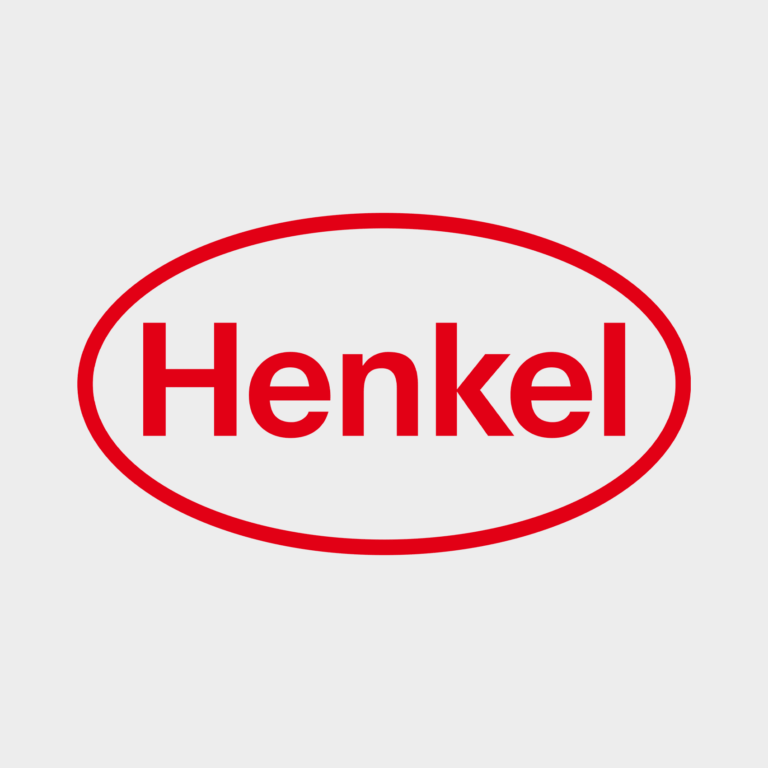Henkel, a global leader in adhesive technologies, has long been synonymous with innovation, reliability, and industrial excellence. Founded in 1876, the company has over 147 years of history and a deeply rooted culture of material science and performance-driven solutions. Today, it employs more than 47,000 people across 126 countries, with 25,000 of them focused on adhesive technologies. Henkel’s LOCTITE brand is renowned worldwide for engineering-grade adhesives and sealants used across aerospace, automotive, electronics, energy, and general manufacturing.
As the hydrogen economy accelerates, Henkel is leveraging its industrial expertise to meet the sector’s growing demand for safe, efficient, and reliable sealing, bonding, and protection technologies.
“For us, hydrogen is just another medium,” said Tobias Kaefer, Business Development Manager at Henkel. “We’ve been serving gas and fluid-related industries such as pumps, valves and compressors for decades. Hydrogen is an energy carrier and storage medium of the future with unique characteristics.”
Henkel’s move into hydrogen is not a reinvention – it is a strategic expansion. Already a trusted partner in the oil, gas, and industrial sectors, Henkel had worked with hydrogen-related applications for years. With the energy transition driving investment into clean hydrogen, the company seized the opportunity to formalise its offering with a hydrogen-specific portfolio under the LOCTITE brand. This portfolio was developed by a global team and rolled out across Western Europe in early 2025.
“It started with our global team building a hydrogen solutions package. We have now regionalised it and are collaborating closely with customers in Western Europe to tailor it to their needs,” said Kaefer.
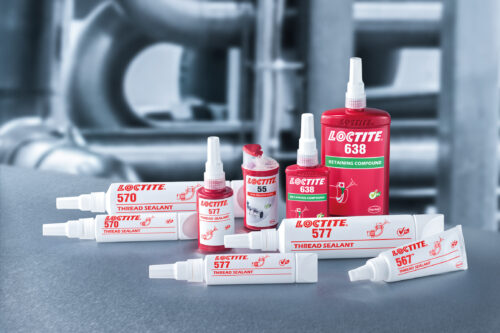
Hydrogen’s Unique Technical Demands
Despite its promise as a climate-friendly alternative energy carrier of the future, hydrogen presents several formidable engineering challenges. Hydrogen is the easiest leaking gas (smallest molecule). Thus, more efforts are needed to exclude leaks. Leaks mostly arise from valves and connections, but also due to its extremely small molecular size, hydrogen permeation is atomic through metals and molecular through polymers. It can degrade materials over time and requires handling at very high pressures, often over 700 bar in storage systems and refuelling applications. Standard sealants and adhesives simply do not cut it.
“Hydrogen will go through steel,” Kaefer emphasised. “You need high-performance adhesives that can withstand extreme pressures and prevent leakage. That is why we started with thread sealants. It’s one of our core competencies.”
Henkel’s hydrogen-ready LOCTITE range includes LOCTITE 55, a non-curing thread sealing cord tested for low-pressure applications up to 10 bar requiring adjustability and immediate sealing. LOCTITE 567, 570, and 577 are anaerobic sealants that cure in the absence of air and in contact with metal, offering reliable seals that withstand high pressures up to 500 bar and are compatible with hydrogen. LOCTITE 638, originally used for shaft retention, is now deployed in hydrogen systems due to its strength, very high-pressure resistance up to 1500 bar, and chemical compatibility. These products are certified under the KIWA GASTEC QA AR 214 standard, affirming their reliability in hydrogen systems. They are also distinguished by their ease of use, reduced application time, and ability to be disassembled for maintenance.
For example, one customer working with hydrogen compressors faced recurring issues with high-pressure leaks at 500 – 1000 bar using traditional PTFE thread sealing tape. After switching to LOCTITE 638, they reported zero leakage and easier application. The anaerobic sealant reduced downtime and improved safety, offering a fast-curing, room-temperature solution suitable for stainless steel substrates.
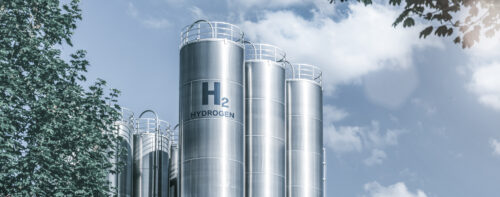
Standing Apart from Traditional Methods
Traditional thread sealing methods like PTFE tape, cone & thread fittings, and EPDM gaskets have drawbacks; PTFE tape can shred or loosen, while cone & thread fittings are costly and rigid. EPDM may degrade under hydrogen exposure. On the other hand, LOCTITE products offer distinct advantages. They are safer since there is no shredding or slippage risk. They are faster to apply, which is perfect for scaling operations. Their versatility means one product can work across various diameters, and they are disassembly-friendly for maintenance. “You just need a few drops, and you can seal multiple diameters with the same product,” said Kaefer.
Henkel’s value proposition extends beyond individual adhesives. The company delivers end-to-end support, including on-site application audits, customised testing and validation, automated application equipment, and training and certification readiness. “We work hand in hand with customers to tailor the right solution and validate it together,” Kaefer explained. This collaborative approach is vital in an industry where formal hydrogen certifications are still catching up to market demand. It proactively engages with certification bodies such as TÜV and DVGW to help bridge that gap.
Across the hydrogen ecosystem, Henkel’s technologies play a vital role – from electrolyzers and stack assembly to gas purification systems, high-pressure piping, tanks, valves, compressors, and end-use applications such as refuelling stations, fuel cells, and hydrogen-ready heating systems.
Another case involved a customer in the mobility sector requiring hydrogen leak-proof thread sealing for bus and vehicle fuelling stations, operating up to 1000 bar and within a wide range of thermal temperatures of -60°C to 40°C. Henkel recommended LOCTITE 638, which demonstrated excellent sealing, quick curing, and ease of use, helping the customer reduce energy loss, maintenance time, and contamination risks.
“We serve the full ecosystem, from generation to storage, transport, and end use. That said, electrolyzer stack bonding is one of the biggest application areas right now,” Kaefer noted.
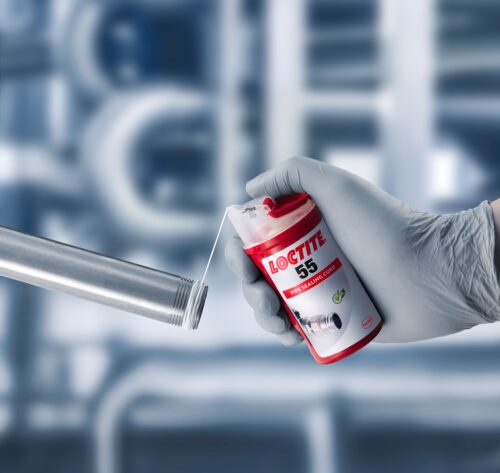
Flexibility vs. Standardisation
With over 5,000 adhesives in its global portfolio, the company has the range to support highly customised solutions. However, Kaefer noted that standardisation remains a long-term goal, which will be essential for scale and cost reduction. “At this stage, flexibility is key,” he explained. “No two hydrogen systems are the same. But we’re identifying common needs and building a strong core portfolio that we can scale.”
While Henkel operates in the chemical sector, its hydrogen strategy supports broader environmental goals. LOCTITE products help prevent hydrogen leaks, which are not only dangerous but can also undermine hydrogen’s environmental benefits. Moreover, by reducing downtime and simplifying maintenance, they enable more efficient systems.
“The biggest sustainability impact we have is through our customers. By helping them reduce waste, energy use, and emissions, we amplify our contribution,” said Kaefer. The company also supports circularity by enabling pipe repairs over full replacements and designing adhesives that reduce the need for bulky mechanical fittings.
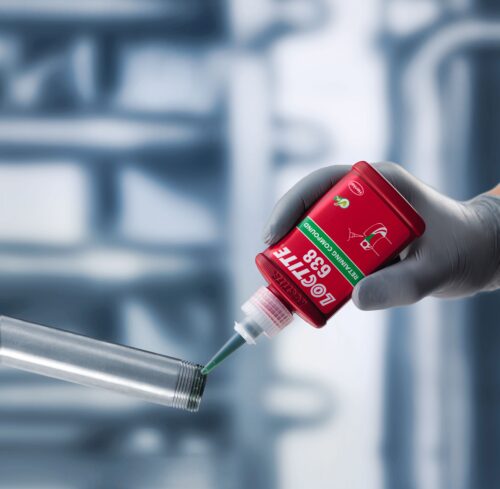
Future-Ready Innovation
Research and development efforts are currently focused on next-generation solutions, including flange sealing adhesives expected to launch in Q3/Q4 2025, high-temperature sealing products for fuel cells, pipeline repair kits, and smart application tools that help minimise waste and labour costs. In parallel, the company is collaborating with universities and hydrogen testing institutes to ensure its innovations align with and anticipate the rapidly evolving demands of the hydrogen sector. “We learn from our customers, and they learn from us. Our adhesives are ready for mass production, now it is about helping the hydrogen market scale safely, reliably, and affordably,” notes Kaefer.
Credibility, performance, and adaptability are essential qualities in a nascent and rapidly evolving industry like hydrogen. Henkel offers proven products tested at up to 1500 bar, cross-sector hydrogen expertise, global reach with local technical support, and a full-solution mindset that goes beyond adhesives. “At the end of the day, our goal is simple: deliver fast, safe, and reliable solutions that help the hydrogen economy thrive,” Kaefer concluded. In a world racing toward decarbonisation, LOCTITE’s small drops might hold the key to big progress.


